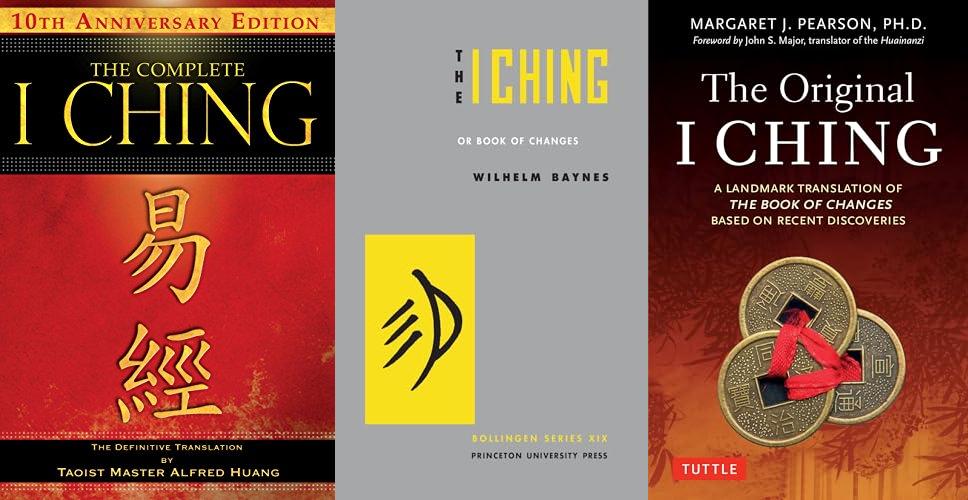Have you ever felt lost trying to understand an ancient text? The I Ching, also known as the Book of Changes, is a wise and old book that has helped people for thousands of years. It’s like a guide for life, offering advice and showing different paths. But when you want to read it, you find so many different versions! It can be confusing to pick the one that speaks to you.
Many people get stuck trying to find the best I Ching translation. Some versions sound too old-fashioned, while others are hard to understand. You want a translation that is clear, accurate, and captures the true wisdom of this special book. It’s frustrating when you can’t find the right words to unlock its secrets. You might wonder if you’re getting the real meaning.
This blog post will help you sort through the choices. We’ll look at what makes a good I Ching translation and what to look for. By the end, you’ll feel more confident choosing a version that will truly guide you. Get ready to discover the I Ching in a way that makes sense for you!
Our Top 5 I Ching Translation Recommendations at a Glance
Top 5 I Ching Translation Detailed Reviews
1. The Complete I Ching ― 10th Anniversary Edition: The Definitive Translation by Taoist Master Alfred Huang
Rating: 9.1/10
The Complete I Ching ― 10th Anniversary Edition: The Definitive Translation by Taoist Master Alfred Huang offers a deep dive into an ancient Chinese wisdom text. This edition is presented as the ultimate guide to understanding the I Ching, a book of divination and philosophy. It aims to make complex ideas accessible to both beginners and experienced practitioners.
What We Like:
- Master Alfred Huang’s translation is highly respected. It is known for its clarity and accuracy.
- The 10th Anniversary Edition likely includes thoughtful editing and perhaps bonus materials.
- This book provides a complete translation. Readers get the full text.
- It is considered a definitive resource for I Ching study.
What Could Be Improved:
- The I Ching itself can be a challenging subject. Some readers might find the concepts difficult at first.
- The book’s size and depth mean it requires commitment to study.
This edition stands out as a premier choice for anyone serious about exploring the I Ching. It promises a rich and enlightening journey into its timeless wisdom.
2. The I Ching or Book of Changes
Rating: 8.9/10
The I Ching, also known as the Book of Changes, is an ancient Chinese text. It’s a guide for understanding the world and making good decisions. People have used it for thousands of years. This edition, the Bollingen Series version, is a well-respected translation.
What We Like:
- The translation is clear and easy to understand.
- It offers deep wisdom for life’s questions.
- The book provides a system for divination.
- It helps you see different sides of a situation.
- The Bollingen Series edition is known for its quality.
What Could Be Improved:
- The language can sometimes feel a little old-fashioned.
- It takes time to really learn how to use it well.
- Some readers might find the concepts challenging at first.
This edition of the I Ching offers a rich journey into ancient Chinese thought. It is a valuable resource for anyone seeking guidance or deeper self-understanding.
3. The Original I Ching: A Landmark Translation of The Book of Changes Based on Recent Discoveries
Rating: 9.2/10
The Original I Ching: A Landmark Translation of The Book of Changes Based on Recent Discoveries offers a fresh look at an ancient text. This translation promises to bring new understanding to the wisdom found within this classic book. It is based on recent findings that shed light on its original meaning. This makes it a significant resource for anyone interested in the I Ching.
What We Like:
- Offers a unique perspective on the I Ching.
- Uses new discoveries to improve understanding.
- Presents the text in an accessible way.
- A valuable tool for study and reflection.
What Could Be Improved:
- The “N/A” feature makes it hard to pinpoint specific improvements in that area.
- More details about the “recent discoveries” could be helpful.
This translation is a noteworthy addition for those seeking a deeper connection with the I Ching. It opens up new pathways for exploring its timeless messages.
4. I Ching: The Book of Change: A New Translation
Rating: 9.4/10
The I Ching: The Book of Change: A New Translation offers a fresh look at an ancient Chinese text. This book helps you understand the wisdom of the I Ching. It guides you through its hexagrams and their meanings. This translation aims to make the I Ching more accessible to modern readers. It’s a tool for reflection and guidance.
What We Like:
- The new translation makes the I Ching easier to understand.
- It provides clear explanations of the hexagrams.
- The book encourages self-reflection and personal growth.
- It offers a unique perspective on life’s challenges.
What Could Be Improved:
- Some readers might find the philosophical concepts challenging at first.
- More examples of how to apply the I Ching to specific situations could be helpful.
This new translation of the I Ching is a valuable resource for anyone seeking deeper understanding. It opens the door to ancient wisdom in a clear and engaging way.
5. I Ching
Rating: 8.9/10
The I Ching, the Oracle: A Practical Guide to the Book of Changes is a special book. It offers a new way to understand the ancient Chinese text known as the Book of Changes. This version brings back the older, more spiritual roots of the I Ching. It is an updated translation. It also has notes that explain the culture and history behind it. This helps make the I Ching easier to use for modern readers.
What We Like:
- The translation is clear and easy to understand for beginners.
- The added cultural and historical notes make the text much richer.
- It helps connect the I Ching to its shamanic origins, offering a deeper perspective.
- The practical guide aspect makes it useful for daily readings.
What Could Be Improved:
- Some readers might find the depth of shamanic origins requires prior knowledge.
- The amount of annotation, while helpful, can sometimes feel extensive.
This updated I Ching offers a fresh and insightful look at a classic text. It is a valuable resource for anyone interested in divination, philosophy, or ancient wisdom.
Choosing Your I Ching Translation: A Guide to Wisdom
The I Ching, or Book of Changes, is an ancient Chinese text. It offers wisdom and guidance. Finding the right translation is important for understanding its deep meanings. This guide will help you pick the best I Ching translation for your needs.
Key Features to Look For
When you shop for an I Ching translation, check for these important things:
- **Clarity of Language:** The translation should be easy to read. It should not use confusing words.
- **Accuracy:** A good translation stays true to the original Chinese text. It doesn’t change the meaning too much.
- **Commentary and Explanations:** Many translations include notes. These notes help explain the hexagrams and lines. They make the I Ching easier to understand.
- **Structure and Layout:** The book should be organized well. It’s helpful if it has a good index.
- **The Author’s Background:** Knowing about the translator’s experience with the I Ching can be helpful.
Important Materials
Most I Ching translations are books. The quality of the paper and binding matters.
- **Paper Quality:** Good paper feels nice to touch. It should not be too thin or see-through.
- **Binding:** A strong binding keeps the book together. It helps the book last a long time.
- **Digital Formats:** Some translations are available as e-books. These are easy to carry and search.
Factors That Improve or Reduce Quality
What makes an I Ching translation great or not so great?
Things That Improve Quality:
- **Scholarly Research:** Translations made by people who studied the I Ching for years are usually better.
- **Multiple Translations Compared:** Some translators compare different older versions. This helps them find the most accurate meaning.
- **Clear Explanations:** Good translations explain difficult ideas simply.
Things That Reduce Quality:
- **Too Much Personal Opinion:** A translation should focus on the original text. It shouldn’t add too many of the translator’s own ideas.
- **Outdated Language:** Using old-fashioned words can make it hard to understand.
- **Lack of Explanations:** A translation without any notes can be confusing for beginners.
User Experience and Use Cases
How do people use I Ching translations?
- **For Guidance:** Many people use the I Ching to ask questions about life. They want advice on decisions.
- **For Study:** Scholars and students use translations to learn about Chinese philosophy and history.
- **For Meditation:** Some people read the I Ching for reflection and inner peace.
A good translation makes the I Ching feel like a wise friend. It helps you think about your problems in new ways. The user experience should feel welcoming. It should make you want to explore the text more.
Frequently Asked Questions (FAQ)
Q: What is the I Ching?
A: The I Ching is an ancient Chinese book. It offers wisdom and guidance through its texts and symbols.
Q: Why are there so many different I Ching translations?
A: The I Ching is very old. Translating it from Chinese to English can be hard. Different translators choose different words and styles. This leads to many versions.
Q: Which is the best I Ching translation for beginners?
A: For beginners, look for translations with clear language and lots of notes. The “I Ching: A Portable Translation” by Derek Lin is often recommended. It’s easy to read.
Q: Should I get a translation with a lot of commentary?
A: Yes, especially if you are new to the I Ching. Commentary helps explain the meaning of the hexagrams and lines.
Q: What is a hexagram?
A: A hexagram is a symbol made of six lines. These lines can be solid or broken. The I Ching uses 64 different hexagrams.
Q: How do I use an I Ching translation?
A: You can ask a question, then use coins or yarrow stalks to get a hexagram. Then, you look up that hexagram in your translation to get advice.
Q: Is it okay to use a translation that is very old?
A: Old translations can be interesting. But sometimes their language is hard to understand. Newer translations are often clearer for today’s readers.
Q: What if I don’t understand a part of the translation?
A: That’s okay! The I Ching can be complex. Try reading the commentary or looking at other translations. Sometimes, just thinking about it helps.
Q: Can I use an I Ching translation for fun?
A: Absolutely! You can read it for enjoyment or inspiration. It’s a rich source of wisdom and stories.
Q: Where can I buy an I Ching translation?
A: You can buy them at most bookstores. They are also available online from many retailers.
In conclusion, every product has unique features and benefits. We hope this review helps you decide if it meets your needs. An informed choice ensures the best experience.
If you have any questions or feedback, please share them in the comments. Your input helps everyone. Thank you for reading.






